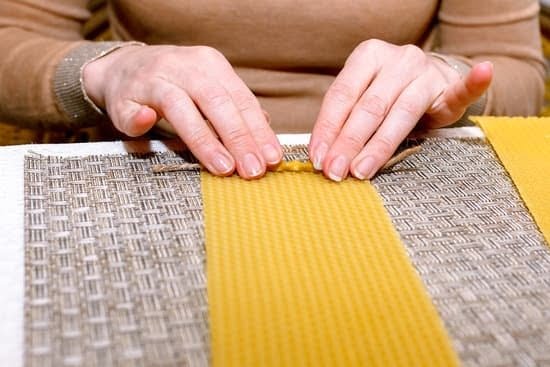Introduction
Making candles with soy wax and beeswax is becoming increasingly popular amongst candle makers as there are many advantages to using these two types of wax. Soy wax has a lower melting point than other types of wax, making it easier to work with and more economical for larger batches. Beeswax is more expensive but offers superior scent retention, slower burning rate and longer burn time than other waxes. Both soy wax and beeswax are all-natural, releasing no toxins in the air when burned, making them safer for those around allergies and sensitivities to fragrances. Additionally, the natural aromas produced by these two types of wax offer a far superior aroma experience compared to commercially produced candles. There are several methods available for melting the wax and combining different ratios or blends of bee or soy Wax to create desired fragrances such as honey or earthy scents. Furthermore, both bee and soy Wax have their own unique characteristics that can help you customize your visual presentation such as coloring or texture. Lastly, by utilizing beautiful containers that represent your personality you can further personalize the candle making process and ensure maximum satisfaction with your end-product.
Advantages/Disadvantages of Using Soy Wax and Beeswax
Advantages of Using Soy Wax and Beeswax:
• Both soy wax and beeswax are non-toxic, making them safe to work with in your home.
• Both waxes are easy to melt and mold into a variety of shapes and sizes.
• Beeswax is a natural wax that has a sweet honey aroma which can be enjoyable while making candles.
• Local beekeepers may even offer their own products at an affordable rate.
• Soy wax burns cleaner than paraffin wax, releasing fewer toxins into the air when burned.
• Once cooled and hardened, soy wax can double as a lotion or skin moisturizer when rubbed into the skin.
Disadvantages of Using Soy Wax and Beeswax:
• Initial cost for supplies may be higher with solely using soy and beeswax as compared to paraffin wax alternatives.
• Candles created from these two types of wax can start to crack over time if not sealed properly once cooled down.
• Allergy concerns for those who are sensitive or allergic to bees or soybeans should be taken into consideration before work begins due to potential reactions towards particles suspended in the air when melting either material during the process of candle making.
Identifying the Best Supplies for Your Candles
When making candles with soy wax and beeswax, it is important to identify the best supplies for your project. First, it is key to purchase a high-quality wax from a reputable source, as this will ensure the longevity and safety of your candles. Soy wax has advantages over other waxes in that it is biodegradable and also burns cleaner than traditional paraffin. Beeswax, on the other hand, is all natural and has a pleasant scent when burned. When looking for containers or molds for candles, it is best to use glass or ceramic jars or tin molds, since these provide the best shape and design structure. Additionally, you’ll need wicks of varying sizes depending on the size of your candle; larger candles require thicker wicks that are capable of providing adequate oxygen intake with their large flame output. Lastly, if you’d like to add color or fragrance to your candles consider utilizing soy-based dyes and essential oils as they are much safer than artificial additives.
Breaking Down the Key Steps of Making Soy and Beeswax Candles
1. Gather Your Supplies: To begin, you’ll need to gather your supplies such as soy wax flakes, beeswax, a double boiler for melting the wax, candle wicks, candle jars or molds and any scent or colorants you’d like to add.
2. Prepare the Candle Tubs: Once all of your supplies are gathered, prepare your molds or jars by setting a pre-tabbed wick inside the candle tub and securing it with a dab of melted wax.
3. Measure Wax: Using a kitchen scale, measure out the desired amount of both soy wax and beeswax according to your recipe. If you plan on adding color or scent make sure to set aside some of the total amount of wax in order to add these additives before pouring.
4. Melt Wax: Place both ingredients into a double boiler and melt them on low heat until they are completely liquefied. Stir constantly while this is happening in order to evenly distribute heat throughout the mixture. Be careful not to overheat the wax as this may cause discoloration or burning scents which can ruin the candles when finished!
5. Add Color & Scent (optional): For fragrant candles pour in desired fragrance oil into the mix and mix gently with your wooden spoon until combined evenly throughout the liquid wax mixture before pouring it into the container(s). Additionally if planning on adding dyes add this now as well stirring once again until combined throughout liquid soap base watery mixture..
6. Pouring: Once everything has been added slowly start pouring your liquid wax evenly into each jar or mold ensuring that you do not pour too quickly so that you do not drown out your wick ” which should remain upright as much liquid wax is poured . By leaving a small gap between top molten liquid layer after an inch has been poured allows hot air draft from center to escape during cooling process later on down line so finished product sets with uniformity around sides walls containers instead bubbling up inside middle per usual cooling patterns in traditional candle making scenarios due sudden changes room temperature environment outside those containers altering natural chemistry theory behind what makesCandles burn nicer..
7. Allow Cooling: Allow wax in tins/molds cool undisturbed at least 12-18 hours (24 preferred) before taking off work surface ” never leave space heater turned on while during cooling process as this may affect speed curing rate on finished product potentially leading brighter flicker image when done instead very dull dimmer light 8.. Trimming Wicks & Packaging : After cooldown time remove newly formed candles from mold tupper where Upon examining edges remaining sides notice stiff peaks because unequal amounts have evaporated during cooling then re trimmed accordingly even length fit within front lip diameter so users don’t have odd protruding Wick toward end main flame needs too stay center edge rounded shape glue 4 corners bottom cutout together cover styrene plastic boxes case secure contents later shipping sale their final destination ready customer enjoy!
Adding Personalization with Color and Fragrance
Making candles with soy wax and beeswax is an easy and fun activity for all skill levels. When making candles with soy wax, there are several personalization options available. Firstly, you can add color to your candle to achieve a unique look – both soy wax and beeswax can be colored easily with either dye blocks or liquid dye. Secondly, you can also choose to add a range of fragrances to create an inviting ambience when the candle is burned; this can be anything from essential oils to fragrance oils. Finally, you can also add decoration such as dried flowers or other embellishments – this will not only give the candle a more personal touch but will also enhance the visual aesthetic of the overall product. Making candles with soy wax and beeswax gives you endless possibilities for creative expression – so don’t be afraid to experiment!
Creative Ways to Market and Sell Your Candles
Marketing and selling your handmade candles is essential for ensuring the success of your business. There are many ways to advertise and promote your unique creations. Here are a few ideas for getting the word out about your handmade soy wax and beeswax candles:
1. Create an Online Presence – Establishing an online presence allows you to easily reach potential customers from around the world. Make sure you have an engaging, visually interesting website that showcases your beautiful candle designs. This can be easily done by creating a compelling portfolio, networking with other candle makers on social media platforms, and utilizing SEO strategies to help people discover you.
2. Participate in Local Crafts Fairs – Nothing quite beats having a physical space where potential customers can interact with and purchase directly from your product range. Selling at local craft fairs is a great way to build relationships in person while also promoting your candles across multiple locations.
3. Giveaway Samples or Offer Discount Codes – Offering sample sizes of some of your popular candles will create buzz as well as get more people familiar with your brand. You can also offer discount codes when someone purchases from you so they can receive attractive discounts for shopping with you again in the future!
4. Invest in Quality Packaging – Investing in quality packaging will not only protect the product but showcase it too! Use branded displays, gift boxes or custom labels to make sure the customer can recognize and appreciate your soy wax and beeswax candles before they even open them up!
Conclusion
Pros:
Making candles with soy wax and beeswax has several advantages. Soy wax is known to be a sustainable, renewable resource because it comes from soybeans, a natural crop. Additionally, soy candles have a longer burn time than those made with paraffin wax or beeswax. Furthermore, these candles are non-toxic and produce little to no smoke or soot when burned properly.
Cons: The main downside of making candles with soy wax and beeswax is the cost; they tend to be more expensive than other types of candles due to the materials needed to make them. Also, as beeswax comes from honeybee hives, many people consider it unethical to use this type of wax in their projects. Lastly, some find it difficult to work with both types of wax due to its thick consistency which can lead to difficulty pouring or shaping the candle.

Welcome to my candle making blog! In this blog, I will be sharing my tips and tricks for making candles. I will also be sharing some of my favorite recipes.





